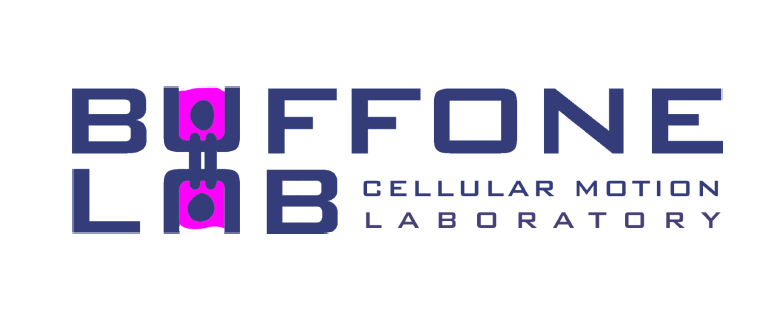Our research lies at the intersection of Glycobiology, Immunology, Mechanobiology, Cellular Motion, and Engineering. Our ultimate goal is to tune and control cellular motion for therapeutic benefit.
Current Projects Include:
Upstream Migration of Immune Cells
Immune cell recruitment to sites of inflammation is a hallmark of the innate immune response. Leukocyte recruitment occurs in discrete steps, commonly known as the leukocyte adhesion cascade. The migration step of the cascade is of critical importance, as it determines how fast and where the Immune cell is able to transmigrate through the endothelium to reach the inflammatory site. A better understanding of the biomechanics of migration under shear flow can help design methods to allow cells to reach their destination faster and more effectively. The Buffone lab studies a unique mode of motility displayed by immune cells while migrating along the endothelial surface, wherein cells are able to efficiently crawl against the direction of shear flow on depending on the CAM the cell engages. Current work revolves around the signalling mechanisms responsible for upstream migration, the biological function, and identifying new immune cells that utilize this mode of motility.
Primary Neutrophils Migrating Against the Direction of Shear Flow on ICAM-1.
Genetic Editing of the Cellular Glycocalyx
The mechanical interactions between a cell and the ECM tissue that encompasses it control nearly all aspects of cellular fate. The glycocalyx, the thick mixture of protein, lipids, and their post-translational sugar structures, surrounds all living cells and acts as a buffer between the cell and the ECM, especially in terms of mechanics. The composition of these sugar structures in the glycocalyx plays an important role in regulating both the overall function and trafficking of both immune and cancer cells. The Buffone lab utilizes CRISPR-based genetic engineering to quantify the relative contribution of the the various components of the glycocalyx in order to better control the glycocalyx-integrin mechanosensing feedback loop. The ultimate goal of this project is to precisely edit or “prune” the glycocalyx at the single sugar level to control tumor cell progression and trafficking. Current work involves determining the critical components of the glycocalyx important in the progression of breast cancer and glioblastoma.
Analysis of Cellular Motion through Microfluidics
Owing to the complexity of the leukocyte adhesion cascade, insights into the control mechanisms of immune cell migration require a fundamental approach which can only be elucidated using well-defined substrates and in-vitro assays. To this end, the Buffone lab utilizes custom microfluidics to re-create and visualize the important steps of the leukocyte adhesion cascade. This allows for the analysis of cellular motility on specific endothelial ligands, ECM proteins, and even cultured cell lines at a variety of mechanical stiffness. It also allows us to visualise the changes in the cytoskeletal architecture of the cell during movement. Current projects include quantifying the change in adhesion efficiency of genetically edited neutrophils in response to acute inflammatory insult.


